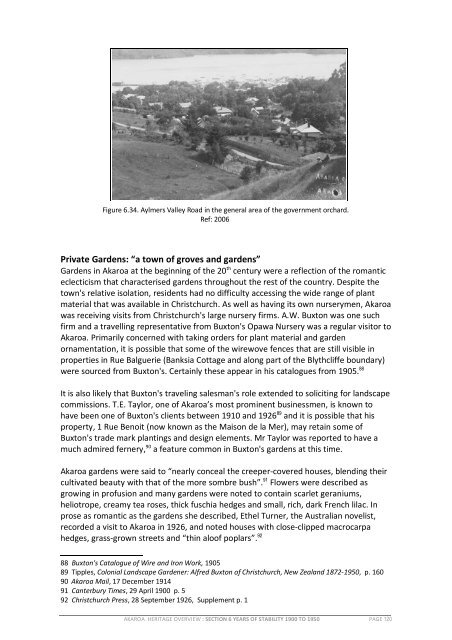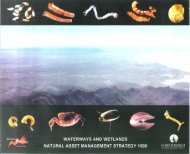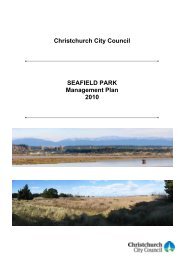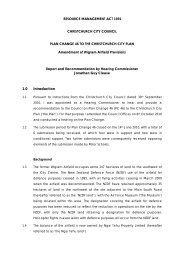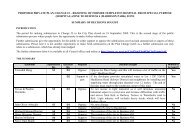Akaroa Historical Overview - Christchurch City Council
Akaroa Historical Overview - Christchurch City Council
Akaroa Historical Overview - Christchurch City Council
Create successful ePaper yourself
Turn your PDF publications into a flip-book with our unique Google optimized e-Paper software.
Figure 6.34. Aylmers Valley Road in the general area of the government orchard.<br />
Ref: 2006<br />
Private Gardens: “a town of groves and gardens”<br />
Gardens in <strong>Akaroa</strong> at the beginning of the 20 th century were a reflection of the romantic<br />
eclecticism that characterised gardens throughout the rest of the country. Despite the<br />
town's relative isolation, residents had no difficulty accessing the wide range of plant<br />
material that was available in <strong>Christchurch</strong>. As well as having its own nurserymen, <strong>Akaroa</strong><br />
was receiving visits from <strong>Christchurch</strong>'s large nursery firms. A.W. Buxton was one such<br />
firm and a travelling representative from Buxton's Opawa Nursery was a regular visitor to<br />
<strong>Akaroa</strong>. Primarily concerned with taking orders for plant material and garden<br />
ornamentation, it is possible that some of the wirewove fences that are still visible in<br />
properties in Rue Balguerie (Banksia Cottage and along part of the Blythcliffe boundary)<br />
were sourced from Buxton's. Certainly these appear in his catalogues from 1905. 88<br />
It is also likely that Buxton's traveling salesman's role extended to soliciting for landscape<br />
commissions. T.E. Taylor, one of <strong>Akaroa</strong>’s most prominent businessmen, is known to<br />
have been one of Buxton's clients between 1910 and 1926 89 and it is possible that his<br />
property, 1 Rue Benoit (now known as the Maison de la Mer), may retain some of<br />
Buxton's trade mark plantings and design elements. Mr Taylor was reported to have a<br />
much admired fernery, 90 a feature common in Buxton's gardens at this time.<br />
<strong>Akaroa</strong> gardens were said to “nearly conceal the creeper-covered houses, blending their<br />
cultivated beauty with that of the more sombre bush”. 91 Flowers were described as<br />
growing in profusion and many gardens were noted to contain scarlet geraniums,<br />
heliotrope, creamy tea roses, thick fuschia hedges and small, rich, dark French lilac. In<br />
prose as romantic as the gardens she described, Ethel Turner, the Australian novelist,<br />
recorded a visit to <strong>Akaroa</strong> in 1926, and noted houses with close-clipped macrocarpa<br />
hedges, grass-grown streets and “thin aloof poplars”. 92<br />
88 Buxton's Catalogue of Wire and Iron Work, 1905<br />
89 Tipples, Colonial Landscape Gardener: Alfred Buxton of <strong>Christchurch</strong>, New Zealand 1872-1950, p. 160<br />
90 <strong>Akaroa</strong> Mail, 17 December 1914<br />
91 Canterbury Times, 29 April 1900 p. 5<br />
92 <strong>Christchurch</strong> Press, 28 September 1926, Supplement p. 1<br />
AKAROA HERITAGE OVERVIEW : SECTION 6 YEARS OF STABILITY 1900 TO 1950 PAGE 120


